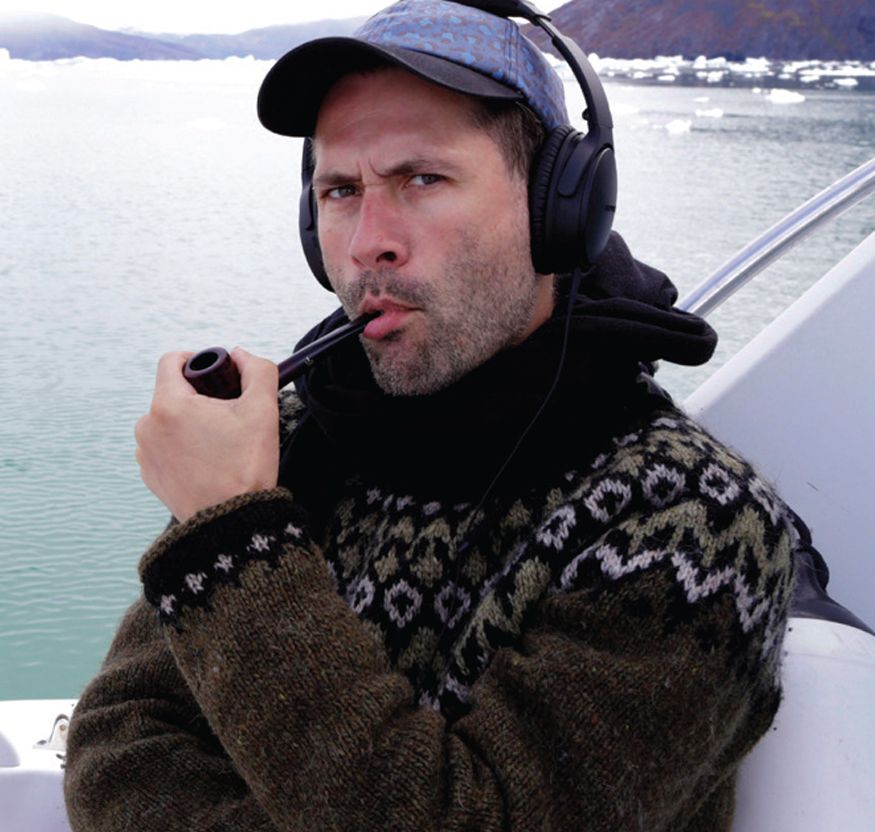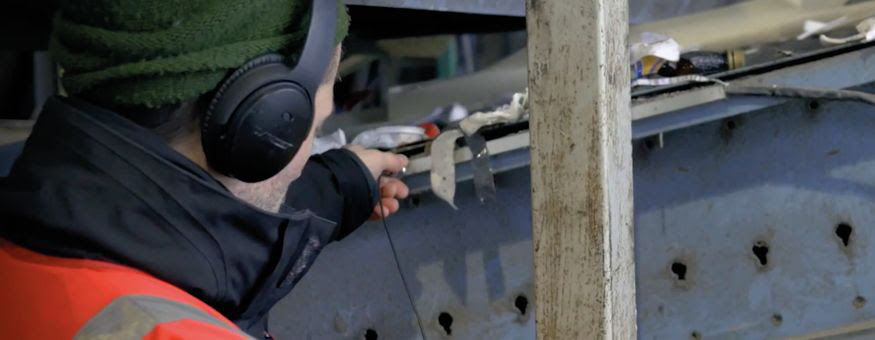 “As an artist, I could create a horrible image that makes people close up and push it away, but if I can make something interesting, with a kind of aesthetic, that will bring them closer and give them an awareness of that experience.”
“As an artist, I could create a horrible image that makes people close up and push it away, but if I can make something interesting, with a kind of aesthetic, that will bring them closer and give them an awareness of that experience.” “As an artist, I could create a horrible image that makes people close up and push it away, but if I can make something interesting, with a kind of aesthetic, that will bring them closer and give them an awareness of that experience.”
“As an artist, I could create a horrible image that makes people close up and push it away, but if I can make something interesting, with a kind of aesthetic, that will bring them closer and give them an awareness of that experience.”Jacob Kirkegaard began playing the guitar at 12, transitioned to the cello, and was lured into using sound to create art by a radio program that introduced him to something called musique concréte, a style that uses recorded sounds as the raw materials for the finished product. For Jacob, the natural world is filled with music, hidden and unedited deep within the earth’s surface or caught in the current of an urban waterway.
The seeming silence isn’t always golden
The goal of Jacob’s work isn’t only to paint a vivid picture of problems in the world or shock his audience with gruesome details of a planet in terror. That, he believes would be counterproductive. According to Jacob, “we, as humans, distance ourselves from things that make us uncomfortable. How do we learn to deal with what distances us?” And with that mindset, he looks for ways to create what he calls a listening space, a space that will encourage reflection on the world around us that we don’t want to see or hear.
He has composed sound works from the abandoned spaces in Chernobyl and Fukushima and of melting ice in the Arctic. With his latest works, listeners take a trip, following waste with recordings in Denmark, Latvia and the extreme destination of the Dandora dumpsite in Nairobi, Kenya, and its challenges with waste management, and he broaches the uncomfortable topic of the final stop in the human condition, exploring acoustic environments related to human post-mortem.
In many of his works, Jacob must find a way to close the distance between the audience and those things that make them uncomfortable. And the subjects of his latest works – burning trash and decomposition – are far from the comfort zones most of us live in.
Hearing about it another way
In Kenya, Jacob spent a considerable amount of time recording massive piles of waste. The sun beating down on the trash generates enough heat to start fires and create a wasteland of burning plastic. It’s in this noxious environment that some of the locals wander through the waste looking for salvage, braving toxic levels of heavy metals and other pollutants – a few suffering burns from the smoldering fires.
 “Everything has sound, but my ears are so limited. Using highly sensitive gear, I can go beyond my capabilities. With my measurement mics, hydrophones and accelerometers, I can hear this wonderful world of ‘micro-sound’, this popping, creaking, pulse in everything.”
“Everything has sound, but my ears are so limited. Using highly sensitive gear, I can go beyond my capabilities. With my measurement mics, hydrophones and accelerometers, I can hear this wonderful world of ‘micro-sound’, this popping, creaking, pulse in everything.”JACOB KIRKEGAARD Dandora dumpsite in Kenya. There is currently legislation for the relocation of the landfill, but disputes concerning the new site have delayed the process. Image courtesy of Jacob Kirkegaard
What could possibly make this a scene that draws one in? Just about everything that can be seen in this scenario is unappealing and, likely repels rather than attracts. To get past the distancing visual, his goal is to bring his audience closer in, to go beyond the macro dystopian visuals to an audio microcosm and find the sounds and rhythms of the waste. On the surface, there is the wind blowing across the debris, creating a soundscape of the surface, but deeper in, there is the settling decomposition of the waste beneath.
Tools of the trade
Since he first began his artistic journey, his efforts to procure the recordings that he would use as the raw materials for creating his sound spaces would require more equipment than standard microphones. He was first introduced to recording with accelerometers and hydrophones while working on his master’s degree at the sound department at the Academy of Media Art in Cologne, Germany. Since then he has used them many times to get recordings in some very extreme environments – from using hydrophones to record the cracking, melting ice from deep inside glacial crevices in Greenland to recording with an accelerometer to capture the sound of thermal springs and volcanic activity in Iceland.
 The same durability and high seismic resonance provided by the titanium housing and design of Type 4514-002 that enabled Jacob to measure inside piles of waste or mounted on massive incinerators at extreme temperatures were the same qualities he would need for recording in Kenya. Image courtesy of John Grzinich
The same durability and high seismic resonance provided by the titanium housing and design of Type 4514-002 that enabled Jacob to measure inside piles of waste or mounted on massive incinerators at extreme temperatures were the same qualities he would need for recording in Kenya. Image courtesy of John Grzinich
LEARN MORE
B&K TRANSDUCERS
Where the sound takes us
Thinking outside traditional recording methods allows Jacob to get inside the environment, be it mounds of trash or melting ice, and record the vibrations as the raw audio tracks that he uses to create the final piece. After scrutinizing his recordings, he can begin to identify the natural rhythms and tones produced by the burning, settling, decomposing heaps of trash and layer the tracks on themselves to build a new sound, disassociating the audience from the source material and providing a listening space where they can reflect on the moment they are in, and then step across that threshold to associate that moment with the things they don’t want to see – or hear

Inscreva-se em nossa Newsletter e receba as últimas histórias do nosso mundo de ruído e vibração

